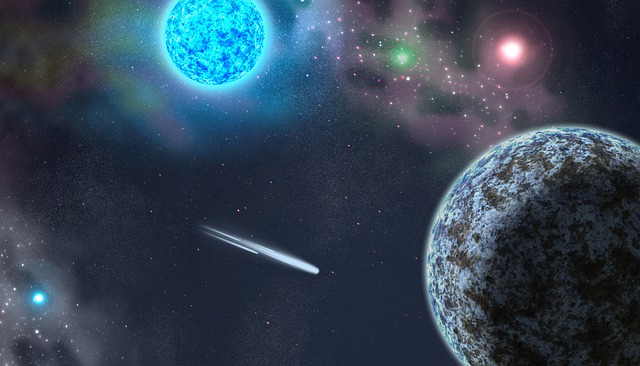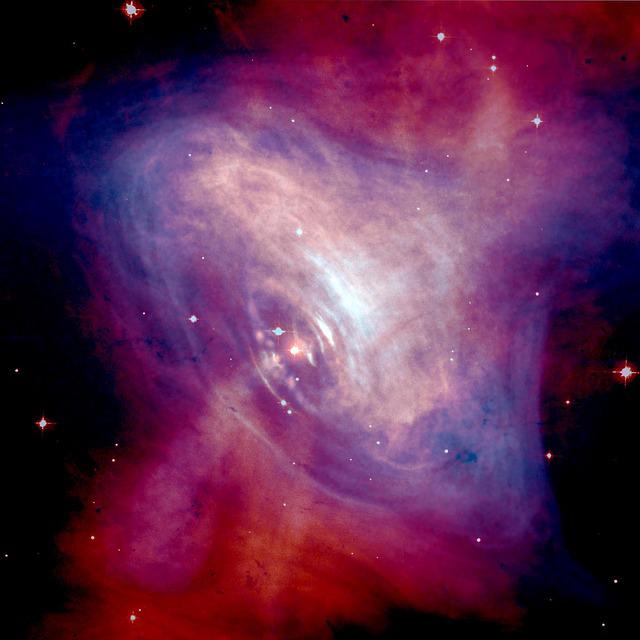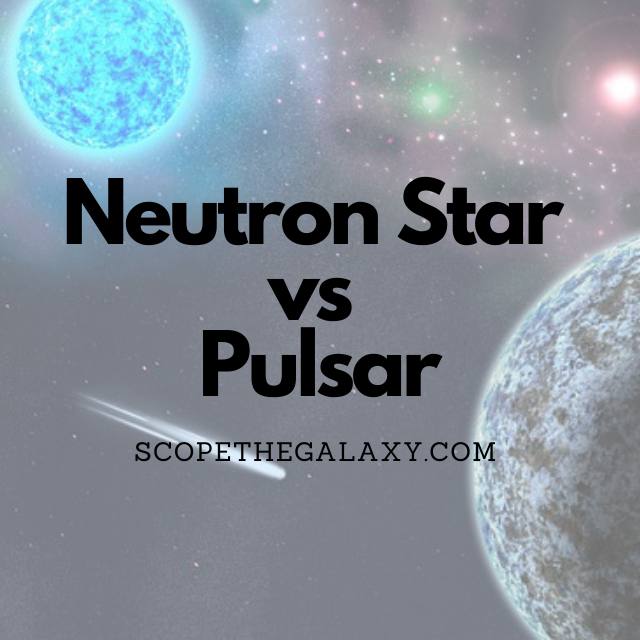*This post may contain affiliate links. This means we may make a commission if you purchase an item using one of our links*
The death of a star can form a variety of unique entities, whether a white dwarf, black hole or in this case the different types of neutron stars.
Pulsars and neutrons stars are one in the same as all pulsars are neutron stars but, not all neutron stars can be classified as pulsars. This is because neutron stars can also be magnetars, which are amongst the most powerful stellar remnants in the universe, emitting waves far stronger than any pulsar ever will.
For a more detailed explanation on how neutrons stars and pulsars function, along with the similarities and differences between the two, continue reading.
What Is A Neutron Star?
Table of Contents

When a star 10 to 20 times more massive than our own sun or more massive than the Chandrasekhar limit of 1.44 solar masses, reaches the end of its life, the core collapses, and the outer matter explodes in a supernova. What remains is known as a neutron star.
The neutron star gets its name from the fact that after the initial explosion of the star, gravity presses the remaining material so tightly that it forces protons and electrons to combine and form neutrons.
If the star’s mass is greater than 20 times our sun’s, this reaction is likely to create a black hole. While black holes are almost impossible to observe, neutron stars are straightforward, thanks to pulsating light.
A neutron takes a mass greater than twice the sun’s mass and condenses it into a spherical object no bigger than one of Earth’s cities. These mysterious objects are still not entirely understood by scientists.
The atmosphere of a neutron star comprises hydrogen, helium, and carbon. The outer crust contains ions and electrons, while the inner crust contains ions and superfluid neutrons. The outer core is superconducting protons, but what exactly comprises the inner core? That fact remains unknown.
The gravity of these objects is so strong that it literally bends its light waves around its body, making it easier for scientists to determine the size and mass of these stars.
What Is A Pulsar?

One thing worth noting before delving into the specifics of a pulsar is that pulsars and neutron stars are one in the same. You could even go so far as to say that all pulsars are neutron stars but, not all neutron stars are pulsars.
In short, what differentiates neutron stars from a pulsar is down to how powerful their energy beams, magnetic field and rays are.
Just like any neutron star, pulsars are both very dense yet small, where they can range between the 20 – 25km in size yet have a mass that is 1.5 times that of the Sun.
Pulsars in essence are extremely fast rotating neutron stars that emit regular pulses of radiation within the span of seconds and even in the lower millisecond range.
The reason pulsars flicker is due to the immense strength of their magnetic field, which has been observed to be 10,000,000 T (teslas), which is a number so large that it can literally warp space and even dilate the time around them, like a black hole.
As the neutron star in this case rotates so quickly, it will open and accelerates charged particle at speeds so fast that 2 beams of extremely powerful electromagnetic waves will jet out from both its north and south magnetic axis.
This in turn means that a pulsar will be flickering or pulsating periodically where it will black out when pointing away from us and light up at the time the electromagnetic waves reach us.
If the neutron star was initially a part of a binary star system, it’s very likely that it’ll remain in orbit with the other star, using some of its energy and matter to oscillate at a much faster rate. Overtime pulsars will slow down as a result of their surroundings but, the oscillation intervals will remain consistent throughout.
Pulsars will typically emit weaker rays such as radio waves with x-rays or even gamma rays on occasion however, once a neutron stars magnetic field is so strong as to emit x-ray and gamma rays consistently, they then fall under the classification of a magnetar, where the 31 currently observed are amongst the most powerful entities in our universe.
Similarities Between Neutron Stars And Pulsars
Technically speaking pulsars and neutron stars are one in the same so everything you would associate with a pulsar would apply to your typical neutron star. This would include the below:
- They’re both extremely dense.
- Both entities warp space and time around them.
- Both pulsate at regular intervals.
- Both entities are the remnants of a dead a star 10 times the size of our sun or above 1.44 solar masses dies in a violent supernova explosion.
- Both have surfaces that are very smooth.
- Both are made of densely packed together neutrons.
- Both spin around 43,000 times per minute.
Differences Between Neutron Stars And Pulsars
The only major difference between the two is that neutron stars can also fall under the magnetar moniker, which is purely down to the magnetic field strength of the neutron star in question.
Pulsars may occasionally emit the stronger x-rays or gamma rays, with radio waves most commonly projected. On the other hand the magnetar form of a neutron star will mostly emit gamma rays and x-rays as a result of their extremely powerful magnetic fields.
Recent observations have possibly suggested that magnetars may be a downgrade from the level of pulsar or vice versa but, this is the only thing that really separates how we differentiate a neutron star from a pulsar as the term neutron star includes both star types whilst pulsars simply includes a singular branch of a these extremely dense remnants.
Summary
Neutron stars and pulsars are one in the same so there isn’t too much you can say to be different. As stated above all pulsars are neutron stars after all.
Neutron stars also including the more powerful magnetars is the only way to sperate the two as, nearly all neutron stars we’ve observed in the universe are pulsars, no matter how slow or fast they may oscillate or flicker.

